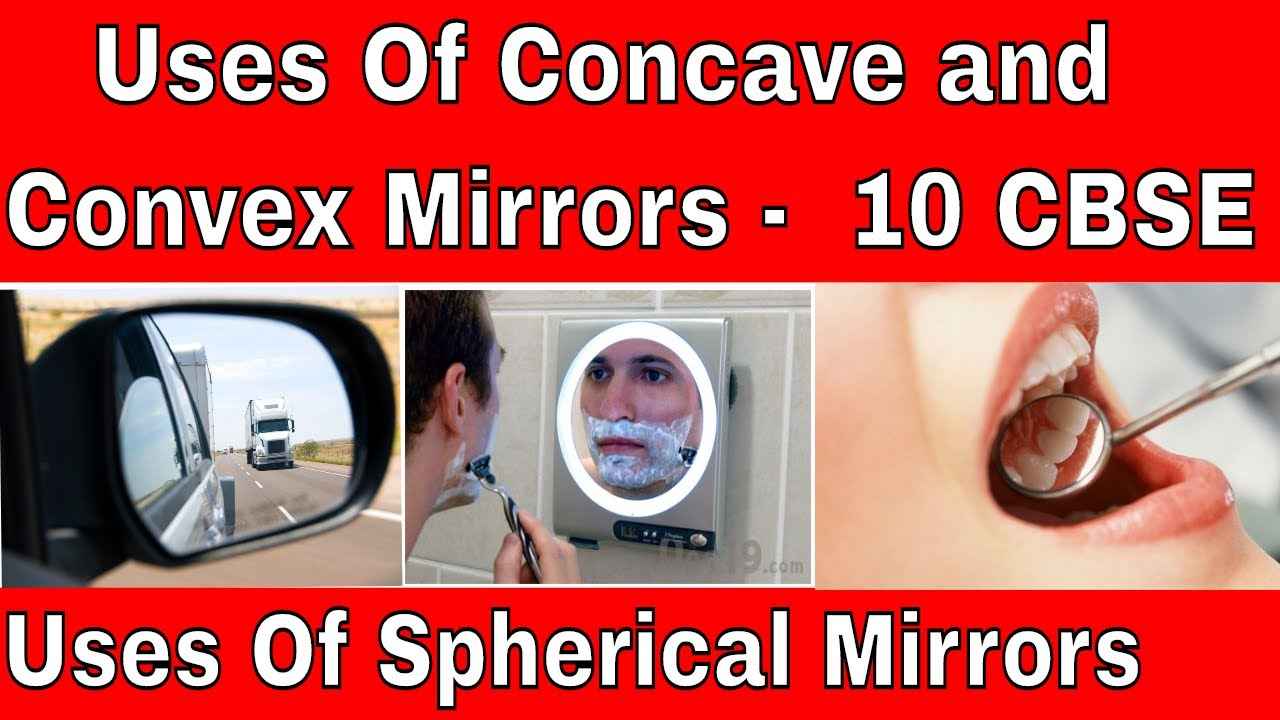Uses of Concave and Convex Mirror in Daily Life and Science
Mirrors play an important role in daily life and scientific applications. Among different types, concave mirrors are especially useful because they can converge light rays and form real as well as virtual images. This topic is very important for students of Class 7, Class 9, and Class 10 Science.
What is a Concave Mirror?
A concave mirror is a spherical mirror whose reflecting surface curves inward, like the inside of a spoon. Because of this inward curve, it is also called a converging mirror.
- When the object is close to the mirror, it forms a virtual, erect, and magnified image.
- When the object is far from the mirror, it forms a real and inverted image.
These unique image-forming properties make concave mirrors extremely useful.
Top Uses of a Concave Mirror
The uses of a concave mirror extend across daily life, science, medicine, and technology.
- Shaving mirrors for enlarged face images
- Makeup mirrors for clear magnification
- Vehicle headlights and torches
- Searchlights
- Solar cookers and solar furnaces
- Telescopes and microscopes
- Dentist mirrors and ophthalmoscopes
- Flashlights and stage lights
Detailed Applications of Concave Mirrors
1. Shaving and Makeup Mirrors
Concave mirrors are commonly used as shaving and makeup mirrors.
- They produce a magnified and upright image when the face is close.
- This helps in seeing fine details clearly.
2. Vehicle Headlights and Torches
Concave mirrors are used as reflectors in headlights and flashlights.
- The bulb is placed at the focus of the mirror.
- Light rays reflect as parallel beams, illuminating long distances.
This improves night driving safety.
3. Searchlights and Solar Cookers
In searchlights, concave mirrors throw intense light over long distances.
In solar cookers, they focus sunlight at one point.
- This concentration produces high heat.
- Used for eco-friendly cooking and energy solutions.
4. Telescopes and Microscopes
Concave mirrors are essential in many optical instruments.
- In telescopes, they collect faint light from distant stars.
- In microscopes, they help focus light on tiny objects.
This allows clearer and brighter images.
5. Medical Instruments
Doctors and dentists use concave mirrors in medical tools.
- Dentist mirrors show enlarged teeth images.
- Ophthalmoscopes help examine the interior.
They provide bright and magnified views for accurate diagnosis.
6. Solar Furnaces
Large concave mirrors are used in solar furnaces.
- They focus sunlight at one point.
- This can melt metals or generate power.
Such systems support renewable energy research.
Image Formation by a Concave Mirror
The image formed depends on the position of the object:
- Object between pole and focus → Virtual, erect, magnified
- Object beyond focus → Real, inverted
- Object at infinity → Image at focus
Understanding ray diagrams is crucial for exams.
Uses of Concave Mirror and Convex Mirror (Comparison)
| Concave Mirror | Convex Mirror |
| Converges light | Diverges light |
| Can form real and virtual images | Forms only virtual images |
| Used in headlights, shaving mirrors | Used in rear-view mirrors |
| Magnifies nearby objects | Shows a wide-angle view |
Key Properties of Concave Mirror
- Can form real and virtual images
- Real images are always inverted
- Virtual images are erect and magnified
- Image size changes with object distance
Uses of Concave Mirror in Daily Life (5 Points)
- Shaving and makeup mirrors
- Vehicle headlights
- Solar cookers
- Dental and eye examinations
- Telescopes for astronomy
Conclusion: Importance of Concave Mirrors
The uses of a concave mirror are deeply connected to daily life and science. From grooming and driving safety to medical diagnosis and space research, concave mirrors play a vital role. For students of Class 7, 9, and 10, understanding these applications strengthens both conceptual clarity and real-world connection.
FAQs on Uses of Concave Mirrors
1. What are the main uses of concave mirrors?
They are used in shaving mirrors, headlights, solar cookers, medical instruments, and telescopes.
2. Why are concave mirrors used in headlights?
They convert light from the bulb into a strong parallel beam for better visibility.
3. Why do dentists use concave mirrors?
To get a magnified and clear view of teeth.
4. How does a concave mirror form a real image?
When the object is placed beyond the focal point.
5. List three daily uses of concave mirrors.
Shaving mirrors, vehicle headlights, and dentist mirrors.
Earth Day Slogans That Rhyme
Earth Day slogans that rhyme can make a big impact, spreading the message of conservation with creativity and fun. Whether it’s “Be clean, go green, keep the Earth serene” or “Pollution’s no solution, let’s work on restitution,” these catchy phrases inspire action. Rhyming slogans are easy to remember and encourage everyone to take part in protecting our planet. On Earth Day, these slogans remind us that small steps can lead to big changes, like planting trees, reducing waste, and saving water. Let’s celebrate Earth Day with powerful slogans that rhyme, spreading the word for a greener future!






[…] Uses Of Concave And Convex Mirror […]